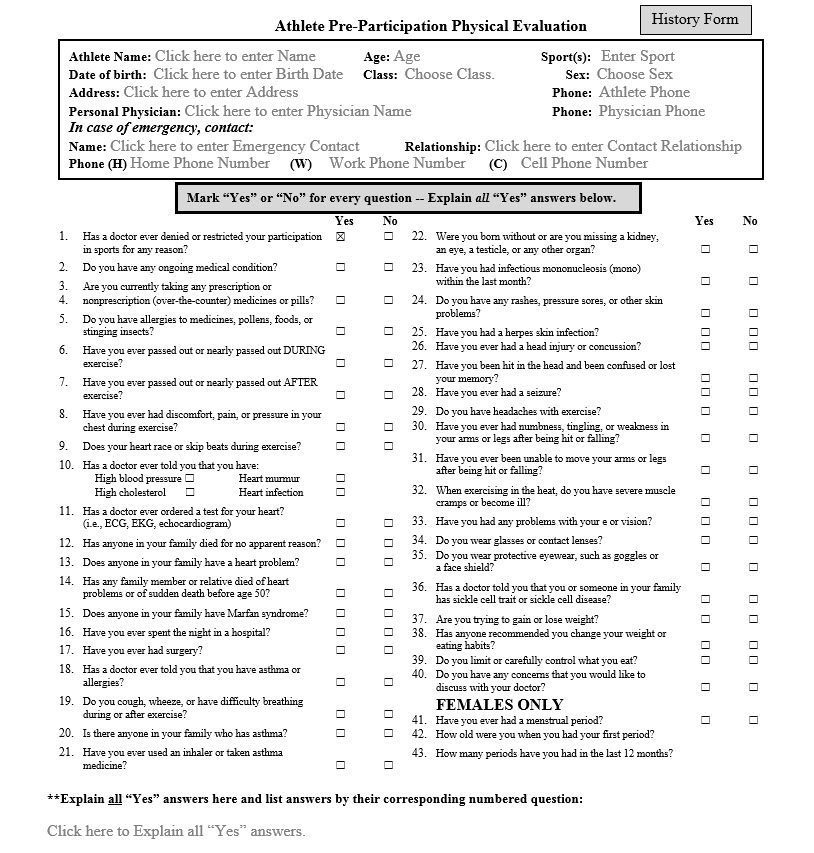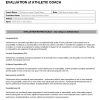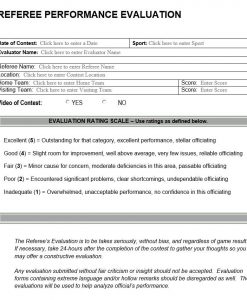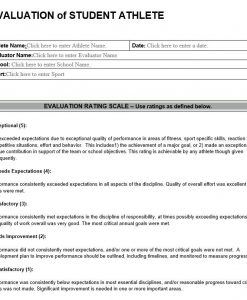Athlete Pre-Participation Evaluation
$10.00
Athlete Pre-Participation Evaluation Form helps to make informed decisions about the student’s health and ability to participate in certain school sponsored and classroom activities, which require physical activity.
The Athlete Pre-Participation Evaluation Form is used to help maintain the health and safety of athletes. Its purpose is not to exclude athletes from participation but to promote safe participation. If not cleared, most athletes can be rehabilitated or redirected to another sport. This goal is achieved by adhering to the evaluation’s three primary objectives.
The pre-participation physical evaluation includes screening for issues that may affect an athlete’s health and safety (e.g., medication, illicit drug, and supplement use; illness; eating disorders; obesity; vision or hearing problems).
Thousands of young athletes receive pre-participation evaluations each year. One objective of these evaluations is to detect underlying cardiovascular abnormalities that may predispose an athlete to sudden death. The leading cardiovascular causes of sudden death in young athletes are rare and difficult to detect clinically. It is recommended that family physicians preform the necessary examination techniques. Athletes, accompanied by their parents, if possible, should be asked about family history of cardiac disease and sudden death. Athletes with “red flag” signs or symptoms may need activity restriction, special testing, and referral if the diagnosis is unclear.
Athlete Pre-Participation Evaluation Form: Primary Objectives
- Detect conditions that might predispose the athlete to injury
- Detect conditions that might be life-threatening or disabling
- Meet legal and insurance requirements
- Determine general health
- Counsel on health-related issues
- Assess fitness level for specific sports
Ideally, the Athlete Pre-Participation Evaluation should be performed at least six weeks prior to pre-season practice, allowing time for correction or rehabilitation of any identified problems. To avoid potential scheduling difficulties, the Athlete Pre-Participation Evaluation might be performed at the end of the previous school year.
Opinions vary regarding how often the young athlete should be evaluated. In some high schools, a full annual evaluation is the norm. Another option, followed primarily at the college level, is a complete evaluation at an entry or new level, followed by an interim annual evaluation.
Related products
Sports





